Do you love savoring the mouthwatering aroma of a perfectly grilled steak? Or perhaps you find yourself irresistibly drawn to the rich smoky flavors only a smoker can deliver? The age-old debate between Smoking vs Grilling has puzzled food enthusiasts for generations, leading to heated discussions and passionate arguments at backyard cookouts. Both cooking methods hold a special place in our hearts regarding barbecuing, but have you ever wondered which one reigns supreme?
This blog post will delve into smokers versus grills, helping you understand each method’s key differences, benefits, and drawbacks. So, grab your aprons, get ready to ignite your taste buds, and join us on this culinary journey as we unravel the secrets behind these two beloved outdoor cooking techniques.
What is Smoking?
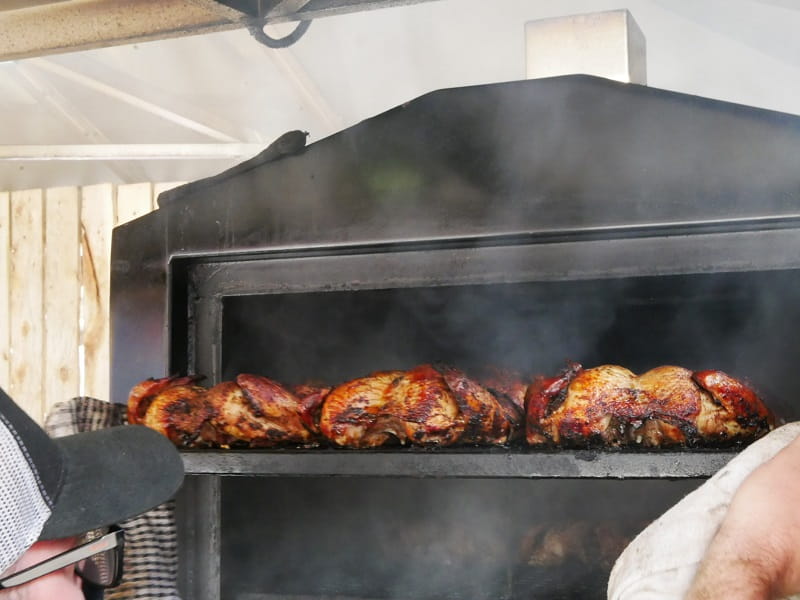
Smoking is a cooking process that involves exposing the meat to smoke from burning wood or charcoal for a prolonged period. This process cooks the meat and infuses it with smoky flavors and aromas.
To begin with, it’s essential to understand that smoking is a slow and low cooking process. Unlike grilling, which involves high heat and quick cooking times, smoking requires low temperatures and long cooking times. This allows the meat to cook slowly and absorb the flavors and aromas of the smoke.
The type of wood used in smoking can greatly impact the flavor of the meat. Different woods have different flavors and aromas, so choosing the right wood for the meat you’re cooking is important. For example, hickory wood has a strong and bold flavor that goes well with beef and pork, while apple wood has a sweeter and milder flavor that complements poultry and fish.
One of the biggest advantages of smoking meat is that it can cook tougher cuts of meat, such as brisket or pork shoulder, which would normally be tough and chewy if cooked using other methods. Smoking these cuts of meat at low temperatures for a prolonged period of time breaks down the connective tissues and results in tender and juicy meat.
To smoke meat, you will need a smoker, which can be electric, gas, or charcoal. Each type of smoker has advantages and disadvantages, and choosing the right type for your needs is important.
The Different Methods of Smoking
I’ve had the opportunity to try various methods of smoking meat. Each method brings something unique, resulting in a deliciously tender and flavorful barbecue. Here, I’ll walk you through the different methods of smoking meat, sharing tips and tricks.
- Direct Heat Smoking: Direct heat smoking involves grilling your meat directly over the fire. This method is perfect for burgers and other small cuts of meat that cook relatively quickly. The direct heat creates a nice sear and smoky flavor, giving your meat that classic barbecue taste.
- Indirect Heat Smoking: Indirect heat smoking, on the other hand, is all about slow cooking your meat to achieve that fork-tender texture. You’ll need a smoker or grill with a built-in smoking feature. The fire is built on one side of the grill, while the meat is placed on the other, away from the direct heat. This allows the meat to cook slowly and absorb the smoky flavors.
- Cold Smoking: Cold smoking is often used to preserve foods like cheese and fish. It involves smoking the meat at temperatures below 100°F for an extended period, sometimes up to 24 hours. This method imparts a subtle smoky flavor without actually cooking the meat. Cold smoking is perfect for adding a touch of smokiness to cured meats and fish.
- Warm Smoking: Warm smoking is popular for meats like pork butt, chicken, and ribs. The temperature used in warm smoking ranges from 100°F to 140°F, which cooks the meat slowly while still adding that smoky flavor. It’s essential to monitor the temperature closely to ensure food safety. Warm smoking gives you juicy, fully-cooked meats with a distinct smoky taste.
- Hot Smoking: Hot smoking is the most common method of smoking meat. It involves smoking the meat at temperatures between 180°F and 250°F. This temperature range cooks the meat thoroughly while still maintaining its moisture. Hot smoking is ideal for larger cuts of meat, such as brisket, which benefit from the slow cooking process. The result is a tender, succulent piece of barbecue goodness.
- Liquid Smoke: If you don’t have access to a smoker or grill, you can still achieve that smoky flavor by using liquid smoke. Liquid smoke is a condensed form of smoke available in most grocery stores. Brush it onto your meat before cooking, and you’ll get a hint of smokiness without the need for traditional smoking methods. It’s an excellent option for those who prefer a quicker and more convenient way to enjoy smoked flavors.
What is Grilling?
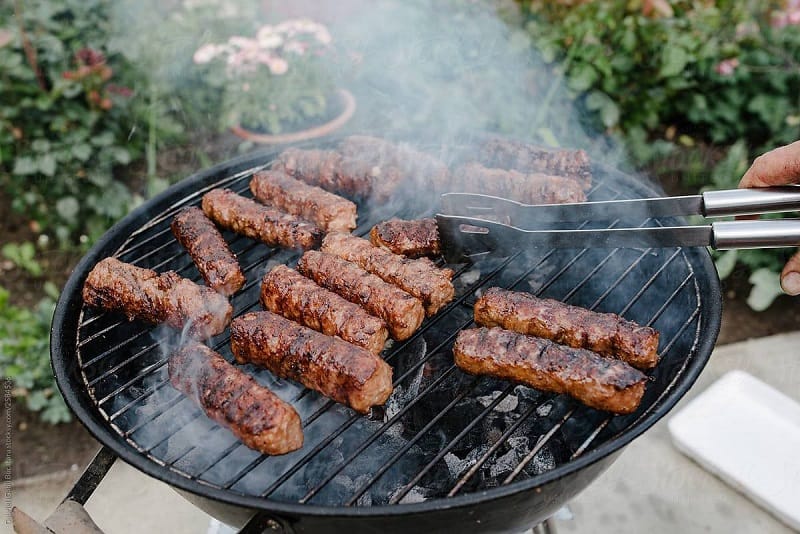
Grilling is more than just cooking food over an open flame. It’s a time-honored tradition that brings people together to enjoy the outdoors, great company, and even better food. As someone with experience and expertise in grilling, I can confidently say there’s nothing quite like the taste of a perfectly grilled steak or burger.
There are a few key things to remember when it comes to grilling. First and foremost, you need to have the right equipment. Whether you prefer a gas or charcoal grill, investing in a high-quality grill is essential for achieving the perfect cook on your food.
Once you have your grill, it’s time to focus on the food. One of the most important things to remember when grilling is to start with quality ingredients. Whether you’re grilling vegetables, seafood, or meat, the fresher, and don’t be afraid to experiment with different marinades and seasonings to add flavor and depth to your dishes.
Timing is also crucial when it comes to grilling. You don’t want to overcook your food, but you don’t want to undercook it. A good rule of thumb is to use a meat thermometer to ensure your food is cooked to the appropriate temperature. And don’t forget to let your meat rest for a few minutes after you’ve taken it off the grill – this allows the juices to redistribute and ensures a more flavorful and juicy result.
Another important aspect of grilling is safety. Always keep a close eye on your grill and never leave it unattended. And be sure to follow proper food safety guidelines, such as washing your hands and keeping raw meat separate from other ingredients.
The Different Methods of Grilling
Let me tell you about the different methods of grilling that can help you become a grill master.
- Direct grilling. This is the most straightforward method where you cook your food directly on the hottest part of the grill. It’s perfect for searing meat or cooking with the grill’s lid closed. Just remember to flip your food halfway through to ensure even cooking. The only downside is that the high heat and fast cooking time might make your food slightly drier.
- Indirect grilling. This method gives you more temperature control and lets you gradually warm your food. You can reheat dishes packed in foil or keep food warm without drying it out. With indirect grilling, you use fewer rings on the grill to manage the heat better. It’s perfect for slow-cooking large cuts of meat and ensuring they stay juicy and flavorful.
- Combo grilling, direct and indirect grilling. Start by searing the meat using direct heat and then cooking it with indirect heat. This method gives you a caramelized exterior while keeping the interior juicy and flavorful. It’s also great for making crispy grilled pizzas.
Each method has its benefits, recommendations, and limitations. Direct grilling is great for foods with shorter cooking times, like steaks, shrimp, and vegetables. Indirect grilling is perfect for slowly cooking large cuts of meat. And combo grilling gives you the best of both worlds. So, why not try each method and see how versatile your grill can be this summer?
What’re The Main Similarities Between Smoking And Grilling?
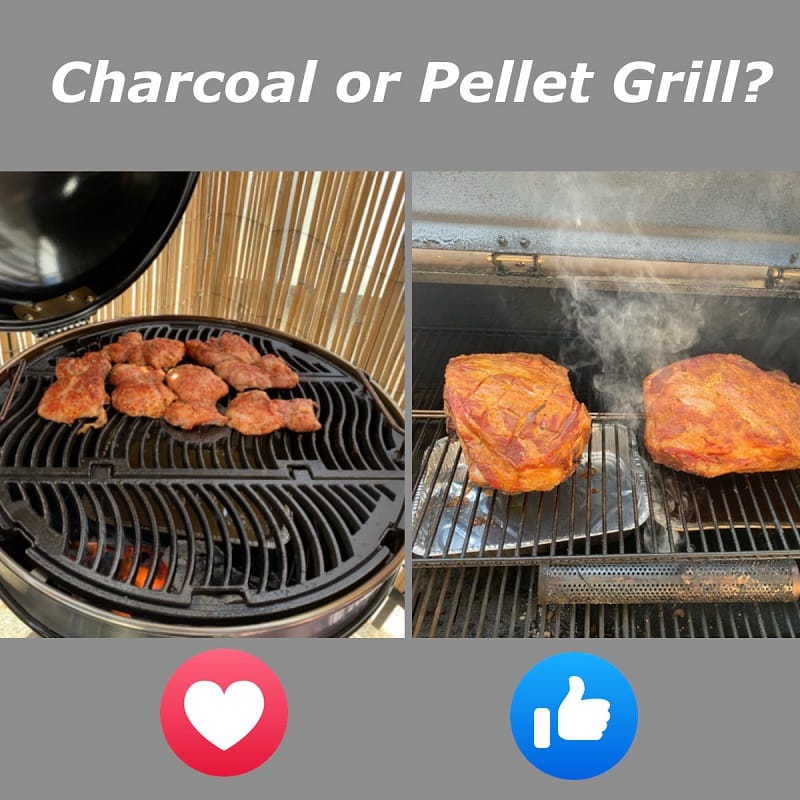
One of the main similarities is that both methods use fire to cook the food. Whether you’re using a smoker or a grill, you’re relying on the heat from the fire to cook your meat. Another similarity is the use of indirect heat. Both smoking and grilling involve cooking the food away from direct flames, allowing the heat to circulate the meat, and cooking it slowly. This results in tender and flavorful meat that is infused with smoky goodness.
Lastly, both methods require patience and attention to detail. Whether smoking or grilling, you need to monitor the temperature, adjust the dampers, and add wood chips or charcoal as needed. It’s a labor of love that requires time and dedication to achieve the best results. So, while smoking and grilling may have distinct flavors and techniques, they share some common ground that makes them both enjoyable ways to cook delicious outdoor meals.
What is the Difference Between Smoking vs Grilling?
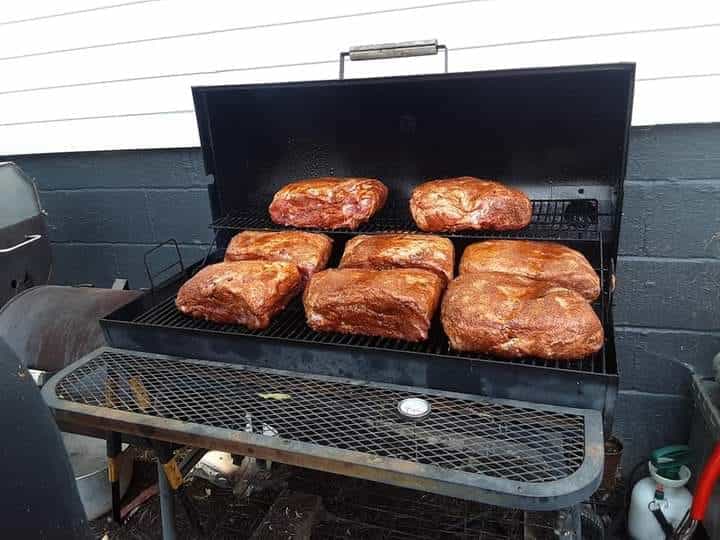
Let’s start with grilling. When you think of grilling, imagine cooking food directly over a fire, whether fueled by charcoal or gas. The key here is high heat and fast cooking. For juicy and tender cuts of meat like ribeye steaks or strip steaks, grilling at temperatures around 450 to 500 degrees Fahrenheit for a short period is the best way to go. Grilling is all about searing the meat quickly to preserve its tenderness and to avoid overcooking and drying it out. It’s a straightforward and no-fuss way to cook steaks, but it requires more finesse for delicate foods like fish, vegetables, or poultry.
On the other hand, smoking involves cooking food slowly and indirectly with the help of flavorful smoke. The temperature for smoking is much lower, usually between 125 and 175 degrees Fahrenheit. This low temperature allows the smoke from smoldering wood chunks or chips, such as hickory or mesquite, to infuse the meat, giving it a distinct and delicious flavor. Smoking is about patience and expertise, often requiring 24 hours or more cooking time. It’s the method of choice for larger cuts of meat like pork shoulders, beef briskets, or slabs of ribs. Slow cooking at low temperatures breaks down the collagen in tough cuts, resulting in tender, melt-in-your-mouth meat.
In summary, grilling is all about high heat and fast cooking, perfect for tender cuts of meat. Conversely, smoking is a slow and low method that utilizes smoke to impart unique flavors and transform tough cuts of meat into tender and flavorful masterpieces. Understanding the differences between these two methods will enhance your outdoor cooking skills and prevent future debates with your fellow food enthusiasts.
Read more:
Temperature Control
When it comes to smoking, the ideal temperature range is usually around 203°F and can even go as high as 212°F. The key to achieving that perfect smoky flavor is to cook the meat slowly over low heat, allowing it to become tender and delicious.
On the other hand, grilling involves cooking food over high heat, typically ranging from 400°F to 550°F, for a short time. This method is perfect for tender cuts of meat like steaks, chicken, and burgers, as it creates a charred surface that seals in the natural juices.
So, in a nutshell, smoking involves low heat and slow cooking, while grilling uses high heat for a quick sear. Both techniques have their unique benefits and can result in mouthwatering dishes.
Time
Grilling is your go-to if you’re looking for a fast and fiery cooking method. Grilling involves cooking food over direct heat at temperatures of 350°F or above for a relatively short period, usually under an hour. It’s perfect for tender cuts like ribeye steaks, strip steaks, and T-bones, preserving their tenderness and preventing overcooking.
On the other hand, smoking is a slow and low-heat cooking technique. It involves cooking meat with smoke from smoldering wood chunks, usually between 125°F and 175°F. Smoking gently infuses the meat with a smoky flavor, making it tender and flavorful. Cooking times for smoking can range from several hours to even a whole day, depending on the type and size of the meat.
Barbecuing combines elements of both grilling and smoking. It requires low heat between 190°F and 300°F and a longer cooking time, typically a few hours. Barbecuing works wonders for larger cuts of meat, such as pork shoulders, beef briskets, and ribs. The low temperatures and extended cooking times result in tender and juicy meats with a distinct smoky flavor.
While the cooking methods play a significant role in determining how long your meat will take to cook, several factors can impact cooking time regardless of the technique. These include the thickness and size of the meat, the ambient temperature, and the efficiency of your cooking equipment.
When deciding between grilling, smoking, or barbecuing, consider the type of meat, your preferences, and the available time. Grilling is the way to go if you’re in the mood for succulent and quickly-cooked steaks. Smoking or barbecuing will be your best options for a leisurely cooking experience with rich flavors and tender meats.
How Does The Flavor Differ Between Foods Cooked On A Smoker Versus A Grill?
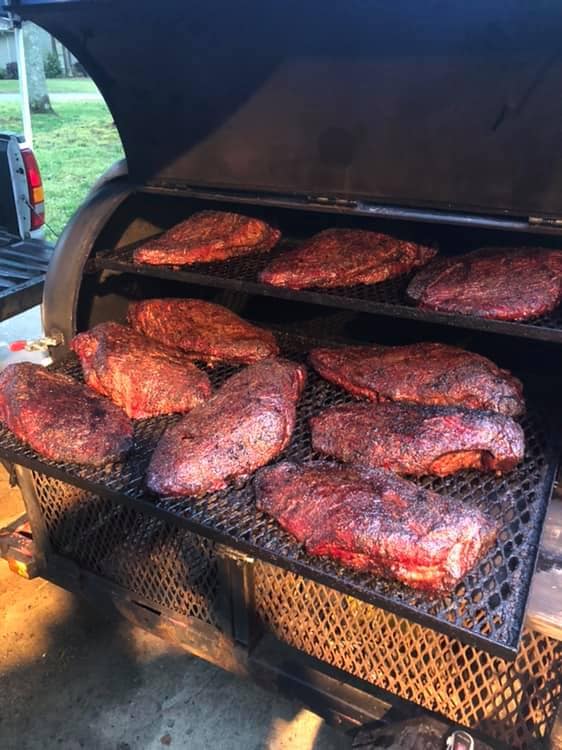
Smoking meat infuses it with a rich smoky flavor as it cooks at a lower temperature over a longer period. This slow cooking process allows the meat to absorb the smoke and flavor, resulting in a unique taste and texture.
On the other hand, grilling meat on a grill produces a different flavor profile. The high-heat grill quickly cooks the meat, creating a charred exterior and sealing the juices. This results in a slightly crispy and caramelized texture with more concentrated and intense flavors.
Types of Grills?
If you’re looking to purchase a grill for your backyard or patio, it’s essential to understand the pros and cons of each type so you can make an informed decision. Today, I’ll go over the most common types of grills and explain what makes each unique.
- First up, we have gas grills. These are probably the most popular type of grill on the market today. Gas grills are powered by propane or natural gas, offering convenience and flexibility. With a gas grill, you can easily control the temperature and cooking time using the built-in knobs and burners. You don’t have to worry about messy charcoal or wood chips. On the downside, gas grills can be expensive and don’t always produce the same smoky flavor as charcoal grills.
- Next, we have charcoal grills. These are the classic, old-school grills that many people grew up with. Charcoal grills use charcoal briquettes or natural lump charcoal as the fuel source, offering a more traditional grilling experience. With a charcoal grill, you must manually light the charcoal and wait for it to heat up before you can start cooking. But once the charcoal is hot, you’ll get that distinct smoky flavor that only comes from cooking with charcoal. On the downside, charcoal grills can be messy and require a bit more effort to maintain.
- You might consider a portable grill if you’re looking for a more portable option. These are typically smaller and lighter than full-size grills and are designed to transport easily. Portable grills can be powered by gas, charcoal, or electricity, depending on the model. They’re great for camping trips, tailgating, or other outdoor adventures. Just keep in mind that portable grills might not have all the features and capabilities of a full-size grill.
- Finally, we have electric grills. These are good options if you don’t have access to gas or charcoal or prefer a more eco-friendly option. Electric grills plug into an outlet and use electricity to heat the grill grates. They’re often smaller and less powerful than gas or charcoal grills but are also very easy to use and maintain. Plus, you don’t have to worry about running out of fuel.
Types of Smokers?
In my experience, various types of smokers are available on the market, each with unique features and benefits.
- First up, we have the traditional smoker box. This is essentially a small metal box that you place on top of your grill grates, filled with wood chips or chunks that produce smoke when heated. While this method can be effective, getting the temperature and smoke levels right requires trial and error. Additionally, you’ll need to watch the box to ensure it stays filled with wood chips.
- Next, we have the charcoal smoker. This is a more old-school approach but one that many people swear by. Charcoal smokers use charcoal briquettes as their heat source and wood chips or chunks for smoke. The key to success with a charcoal smoker is maintaining a consistent temperature – which can be tricky given the unpredictable nature of charcoal. However, a charcoal smoker can produce some seriously delicious results once you get the hang of it.
- Moving on to the world of electric smokers – these are a popular option for those who want the convenience of set-it-and-forget-it smoking. Electric smokers are essentially small ovens that use electricity to heat a metal plate, which in turn produces smoke from wood chips or pellets. While these smokers don’t offer the same level of control as charcoal or wood-burning options, they are incredibly easy to use and can produce great results with minimal effort.
- Finally, we have the pellet grill – a relatively new addition to the smoking world but one that has quickly gained popularity. Pellet grills use small pellets from compressed wood to produce heat and smoke. They are incredibly versatile, allowing you to smoke, grill, bake, and roast on the same machine. The downside? Pellet grills can be quite expensive, and the pellets can be pricey.
What Are The Benefits Of Using A Smoker?
I love using a smoker for cooking! Not only does it add a great flavor to the meat that grilling can’t replicate, but it also has some amazing benefits.
- One of the biggest benefits is how it helps preserve your food for longer hours. The smoking process effectively removes the moisture content from the meat, making it last longer without spoiling. Plus, the smoke creates a unique flavor profile that simple grilling can’t match. The smoke is derived from burning hardwood, which imparts caramelized sugars that taste the meat deliciously.
- Another benefit of using a smoker is that it allows for low-and-slow cooking. This technique is perfect for tough cuts of meat, as it breaks down the connective tissues and makes them incredibly tender. Even the cheapest cuts of meat can be transformed into a decadent feast with the help of a smoker. The slow cooking process also enhances the flavors and aromas of the food, making each bite more intense and complex.
- Additionally, most BBQ smokers are large enough to accommodate large gatherings and parties, making them perfect for entertaining. And with modern smokers, such as electric or pellet smokers, the process is easier than ever. They have digital temperature controllers and user-friendly features that take the guesswork out of smoking. Whether you’re a beginner or an experienced cook, using a smoker can make you a BBQ master in no time.
So if you want to elevate your outdoor cooking experience and create mouthwatering dishes, a smoker is worth considering.
What Are The Benefits Of Using A Grill?
As a seasoned grill master with years of experience and expertise, I can confidently say that there are numerous benefits to using a grill.
- One of the most significant benefits of using a grill is the flavor it imparts to your food. Grilling allows for the natural juices and flavors of the food to be retained, resulting in a smoky and savory taste that cannot be replicated through other cooking methods. Additionally, grilling allows for the use of marinades and rubs, which add an extra layer of flavor to your dishes.
- Another benefit of using a grill is its versatility. Grills come in various shapes and sizes, allowing for various cooking options. Whether you want to sear a steak, smoke a brisket, or roast vegetables, a grill can meet your needs. Grills can be used year-round, allowing you to enjoy grilled foods no matter the season.
- Using a grill also promotes healthy eating habits. Grilling allows excess fat to drip away from the food, resulting in a leaner and healthier meal. Additionally, grilling vegetables and fruits can help retain their natural nutrients, making them a more nutritious option than other cooking methods.
- Grilling is also a social activity that brings people together. Something about the smell of food cooking on a grill draws people in and encourages conversation. Whether hosting a backyard barbeque or simply grilling up dinner for your family, a grill can help create a fun and relaxed atmosphere.
What Are The Key Factors To Consider When Choosing Between A Smoker And A Grill?
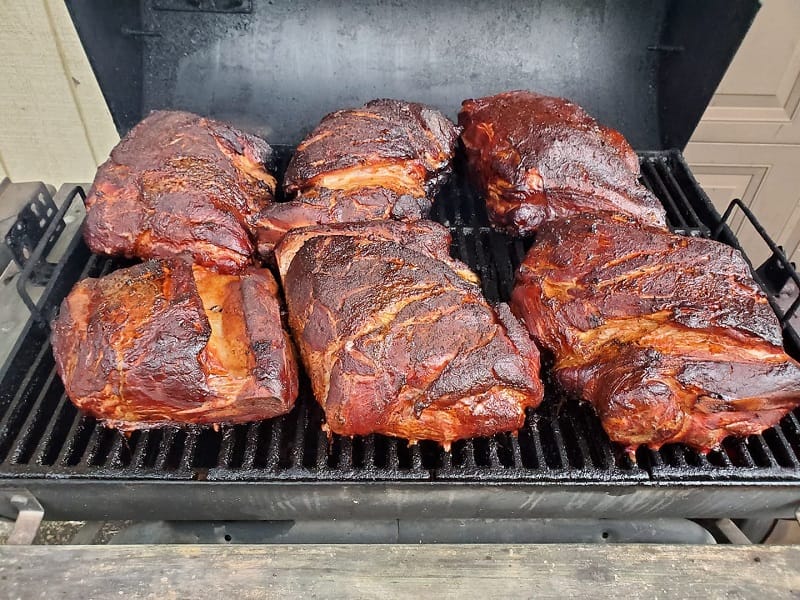
When it comes to choosing between a smoker and a grill, there are a few key factors that I always consider.
- First, I think about the type of meat I want to cook. If I want that rich, smoky flavor, a smoker is the way to go. Smokers use low heat and longer cooking times to infuse the meat with that delicious smoky taste. On the other hand, if I want to cook slabs of meat quickly and get those classic grill marks, then a grill is the better choice. Grills can reach higher temperatures and cook the meat in just a few minutes.
- Another important factor is the size and capacity. A smoker might be the better option for larger gatherings or if you plan on cooking a lot of food at once. Smokers come in various sizes, some even big enough to fit a whole hog or cow. Grills come in different sizes, and you want to ensure enough room for all the food you plan to cook.
- The fuel source is also something to consider. Smokers typically use wood chips or pellets to generate the smoke and heat, whereas grills can use charcoal, gas, or electricity. The fuel source can affect the food’s flavor, so choosing one that aligns with your preferences is essential.
- Lastly, maintenance and cleanup are factors to think about. Smokers require more cleaning, especially if you’re using wood chips or pellets. Conversely, grills may need more regular maintenance, such as cleaning the grates and removing grease.
Ultimately, deciding between a smoker and a grill depends on personal preference and the cooking experience and flavor you’re looking for. I enjoy the versatility, as they each provide unique cooking methods and flavors that can elevate outdoor cooking to the next level.
What Are The Safety Precautions To Keep In Mind When Using A Smoker Or Grill?
When using a smoker or grill, there are some important safety precautions to keep in mind.
- First and foremost, it is crucial to always wash your hands thoroughly with warm water and soap before handling raw meat and seafood. This helps to eliminate any bacteria that may be on your hands and prevents cross-contamination.
- Additionally, it is essential to keep your grill clean and inspect it before each use to ensure it is in good condition. Set up your grill in an open area, away from buildings and combustible surfaces, and always barbecue in a well-ventilated space to avoid carbon monoxide poisoning.
- It is also important to use long-handled barbecue utensils to avoid burns and splatters. Never leave a lit grill unattended; always keep a fire extinguisher or bucket of sand nearby in emergencies.
- Finally, keep cold and hot foods cold to prevent potential foodborne illnesses.
FAQs
How Does The Use Of Direct Heat On A Grill Differ From Indirect Heat On A Smoker?
ranging from 400°F to 550°F. This results in a quick cooking process that takes only a few minutes. Grilling is perfect for more tender meats like chicken, ribs, pork chops, strip steak, burgers, and hot dogs. The high heat creates a charred surface that seals in the food’s natural juices, giving it a delicious flavor.
On the other hand, smoking on a smoker involves indirect heat and low temperatures ranging from 190°F to 300°F. Smoking takes place over a few hours, with the key phrase being “slow and low.” Smoking is ideal for large cuts of meat with tough tissues, such as ribs, brisket, pork butt, and pork shoulder. The extended cooking time makes the meat tender and juicy, almost falling off the bone. Smoking also imparts a smoky flavor to the meat by using smoldering hardwood.
What Are The Advantages Of Using Wood Chips For Smoking Over Charcoal?
Wood chips have several advantages and make it my preferred method.
- First, wood chips offer a unique and distinct smoky flavor to the meat you can’t achieve with charcoal alone. The different types of wood chips, such as hickory, oak, and cherry, provide unique flavors and aromas that enhance the taste of the food.
- Secondly, wood chips burn at lower temperatures than charcoal, allowing for a longer, slower cooking process that results in tender, flavorful meat.
- Wood chips are versatile and can be used in various grilling equipment, such as gas or electric grills and smokers. They can be placed in a smoker box or directly on hot charcoal to create that perfect smoky flavor.
- Lastly, using wood chips adds an element of fun and experimentation to the grilling experience. You can mix and match different wood chip flavors to create customized flavor profiles for different types of meat.
Conclusion
In conclusion, smoking vs grilling is not a competition. Both have their pros and cons, and both can produce delicious food. It all comes down to what you want in an outdoor cooking device. Whether you prefer the rich, smoky flavor of a smoker or the convenience of a grill, there’s no right or wrong answer. So go ahead and choose the one that suits your needs, and enjoy some delicious outdoor cooking!
References:
- https://www.recipetips.com/kitchen-tips/t–1403/methods-of-grilling.asp
- https://www.thespruceeats.com/the-difference-between-barbecue-grilling-and-smoking-4586510

Hey readers! Chip Holland here, and I’m a Manager of this website. My passion for writing about it only matches my passion for BBQ. Follow my blog for mouth-watering recipes, tips, and tricks for the perfect smoke, grill, and BBQ. I’m sure you won’t be disappointed!
